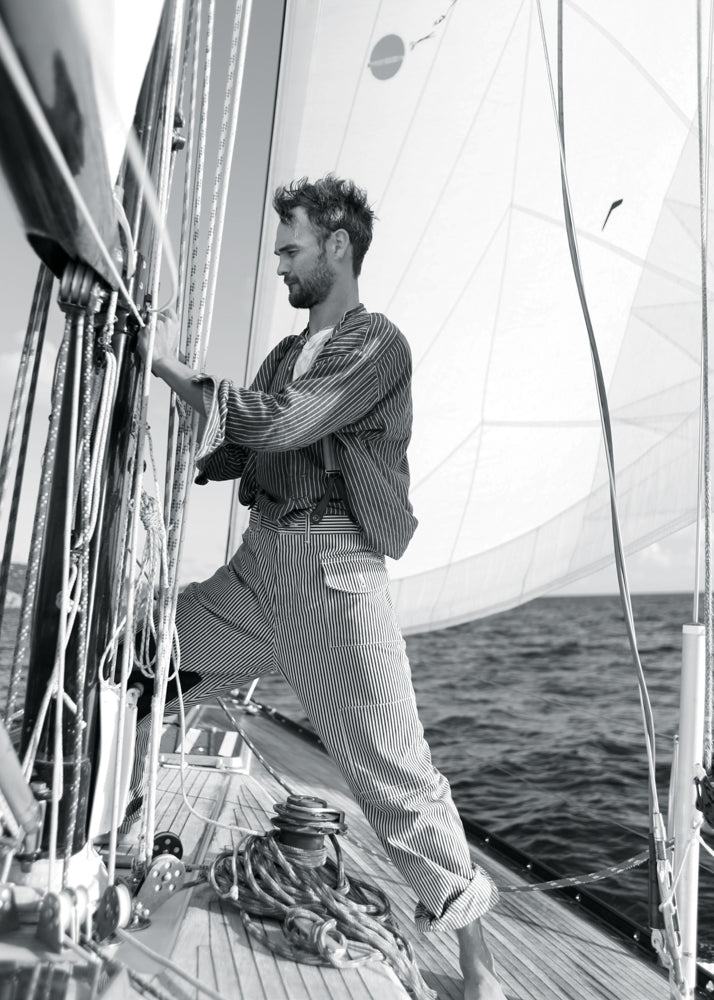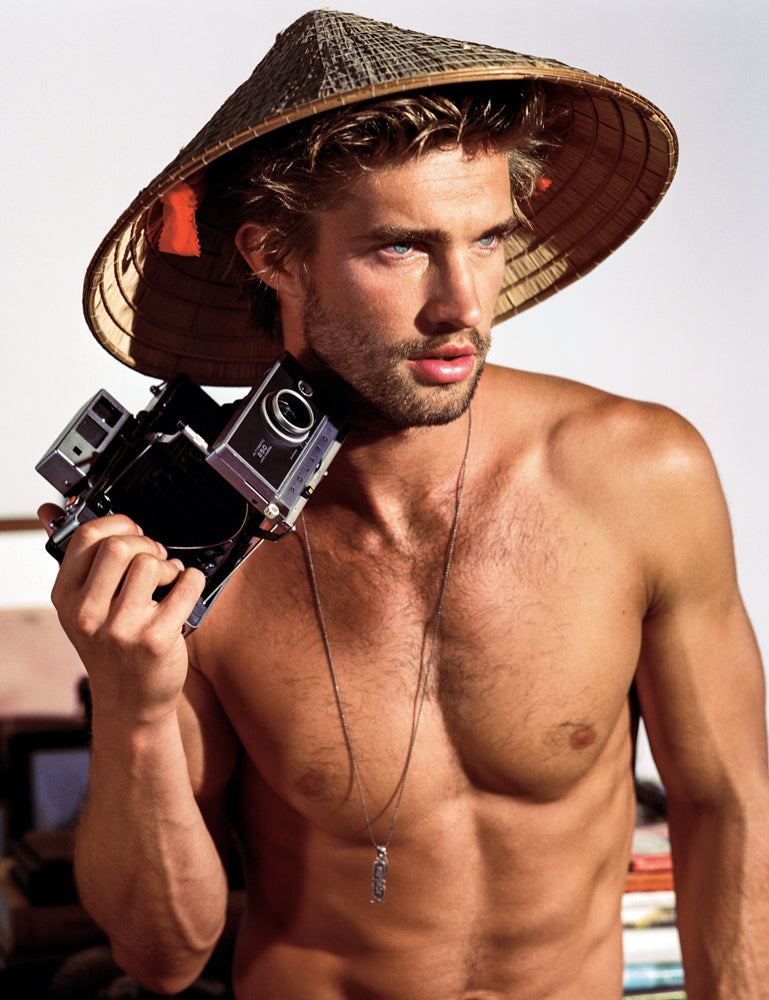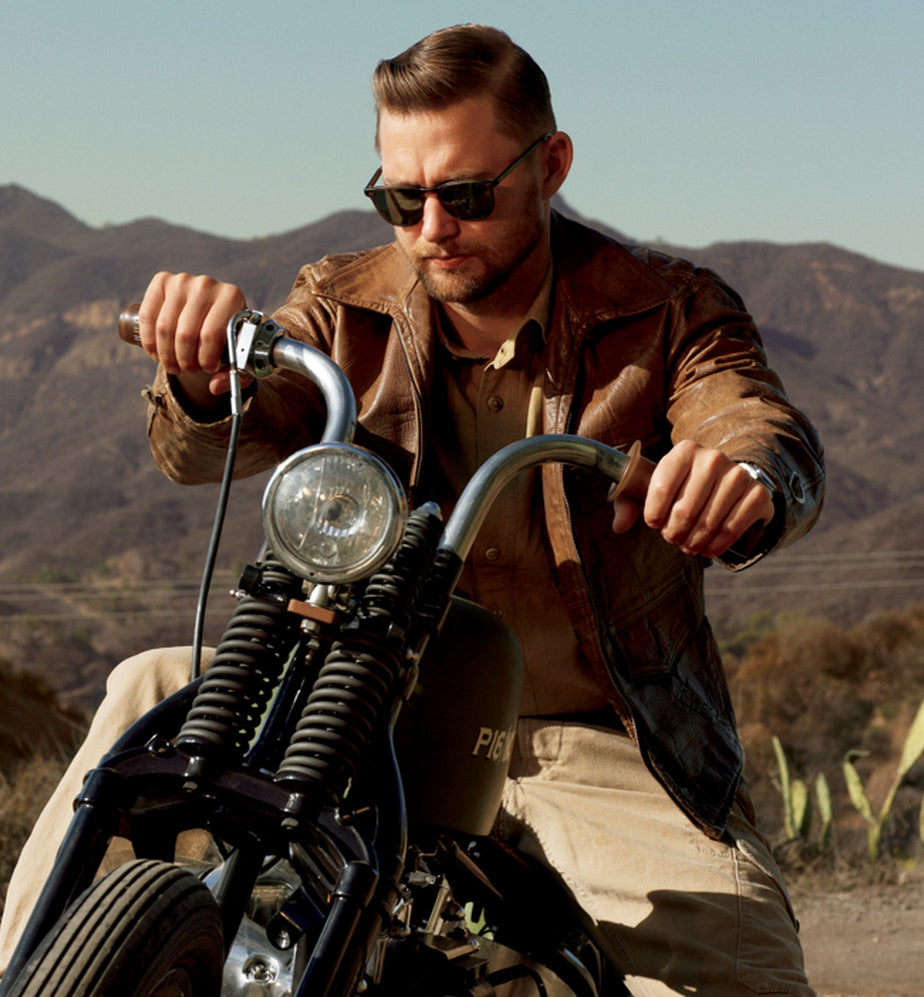
The Imrie Diaries
THE IMRIE DIARIES

A TALE OF TWO BROTHERS
JULIAN IMRIE
Artists Julian and Max Imrie spent their formative years at sea after their father traded his London photo studio for a sailboat in the Caribbean. Today, both brothers’ work explores movement and the quest for freedom within tightly constricted boundaries. It’s a theme they might have picked up aboard the Escapade.
In his late twenties, Julian hitchhiked into Pennsylvania Amish country to learn how to become a cobbler. He stayed for seven years. Today, his handmade boots are highly sought after around the world. We met Julian at his studio in L.A., where he was working on a series of painstakingly precise color studies. He signs them “Chico,” a nickname his stepmother gave him after a character in the Brando film One Eyed Jacks.

“My dad sailed with his father in Scandinavia as a boy and his dream was to live on a boat. When he met his second wife, Pippa, he sold his photo studio in London and the three of us flew to St. Lucia. We bought a Columbia 50 called the Escapade. Nothing could have been more exciting to me at the time.
We lived aboard the boat, sailing between Tortola, St. John, St. Barts, and St. Thomas, where my brother Max was born. Dad basically learned to sail as he went. I learned as well, as there was no choice but to help.
My boyhood heroes came from American comic books, characters like Batman and Spiderman. I also watched a lot of Man from Atlantis and Tarzan as a kid in England. They had no qualms about wearing tights so I wore them, too. I’d climb up the mainsail mast in a pair of Speedos and perch in the tropical sun reading a comic book. Sometimes, wearing a leopard-spotted suit Pippa had sewn for me, I’d pretend to be a super hero of my own invention called Dolphin Man, and swim for hours in water as clear as glass.
At night the moon highlighted distant islands. Dolphins swam alongside the boat, stirring up plankton that shined beneath the water like the stars above us. We lived in the arms of the wind, with birds flying overhead and currents moving beneath us. The ocean was always surprising — I still remember my sheer disbelief the first time I saw a live seahorse. But it could also be capricious.


On our first voyage after riding out hurricane season, the sea swelled high and the sky became dark. We were hit by a sudden squall. My father reefed in the sails while Pippa steered the boat. One-month-old Max was below decks, in his baby cot on the dining room table, when a wave lifted the boat. We keeled over portside. I flew down the stairs of the main hatch just in time to catch my brother from falling off the table. It felt like something out of my comic books.
The impact had damaged some plumbing, and when my dad tightened the shut-off valve, part of the Escapade’s corroded through-hull broke off in his hands. He tore my comic books into pieces and used them to plug the hole. After that, I had responsibilities. I was ‘boat boy,’ Dad’s version of first mate.
Max and I were homeschooled. We ran around with other boat kids on the docks of St. Thomas. We swam in the Sheraton pool and once in a while swindled a Mountain Dew from the dispenser. My brother and I share Imrie blood, which is Scottish and crafty. In the late ’80s, our father sailed the Escapade across the Atlantic to Majorca, where she sank. Max has his own boat now. He’s learned to captain his ship in his own calm, decisive way.”
MAX IMRIE


Born on the water, photographer Max Imrie was 5 years old when the Escapade sank. Today, he uses the set of Dr. Martin’s inks Julian gave him to illustrate and caption photographic journals about his travels aboard a new boat, the Thula. He divides his time between St. Barts, Long Island, and New York City.
“Every year I hear stories of boats sinking. They drag anchor and break their mooring lines. Seacocks and prop seals rupture. Natural gas tanks rust, leak, and explode. Boats with white bottom paint are attacked and sunk by male whales defending their territory. Carbon boats are struck by lightning. When you no longer have a boat of your own, you forget about the trouble and romanticize them. You can lose your head.
I’ve lived near the water all my life and always wanted a boat of my own. It was Julian, bicycling from L.A. to Brazil, who made the urge impossible to resist. It was the timing; we were young, and may have never had the chance again. Besides, a boat is a better way to travel from one continent to another. I wanted a day sailor to learn on, but Dad joined me and insisted she be seaworthy. Twenty-five years after the Escapade sank, we bought a Baltic 39 and called her Thula, which is Zulu for ‘Shh, be quiet.’


On our first voyage, from Long Island to Bermuda, my father was the only person aboard who’d done a passage sail. He was the captain, and I was the navigator and cook. We set sail from the North Shore and a couple hours later we were rounding Montauk, heading into the Atlantic. My friend Frederic caught a striped bass, just in time for dinner. Dad thought the fish was too small. We figured it didn’t matter; we were out to sea. The fish gasped for life as an argument ensued. Frederic took out the hook with pliers. In a flash the fish had fallen back into the sea and Frederic was bleeding onto the deck, cut to the bone by a sharp fin. I cleaned up while Dad superglued the finger back together. Patched up, fed, and back on course, we were looking forward to the maiden voyage. But it wasn’t long before seasickness spread among the greenhorns.
Getting seasick was so anathema to my sense of manhood that I tried to shrug it off. Thirty-eight hours in, on the graveyard shift, I was hallucinating a square-rigger sailing ten feet to the starboard. The only way to break the fever was to lie in the fetal position eating Dramamine (which always makes me dream of chubby people). Four days later, we made Bermuda.
There are times in passage when simple cleanliness is impossible. Water seeps from every window and hatch, soaking your bedding. The boat jerks for days under the percussion of waves, and the cockpit is a snaking mess of tangled lines. Then night falls and it rains. There is little romance. A boat, you learn, is not a mistress, she’s a tool, seeing you through bad weather and keeping you alive. But, when she is fit, she gives you access to a majority of the planet, without nation or law. She’s your home, your territory. On the other end of a passage, anchored in a calm, clear, sand-bottomed bay, with the swim-ladder down and the cockpit table up, she can seem like an absurd luxury.
A few years after that inauspicious start, Dad and I were anchored off the coast of Montserrat watching La Soufrière blow its top. The volcanic plume shot heavenward before blanketing the slopes. We turned off the Yanmar and everything was silent. The color of the sea was a deep, lacquered blue. This, I thought, is why a boat is worth the trouble.”




